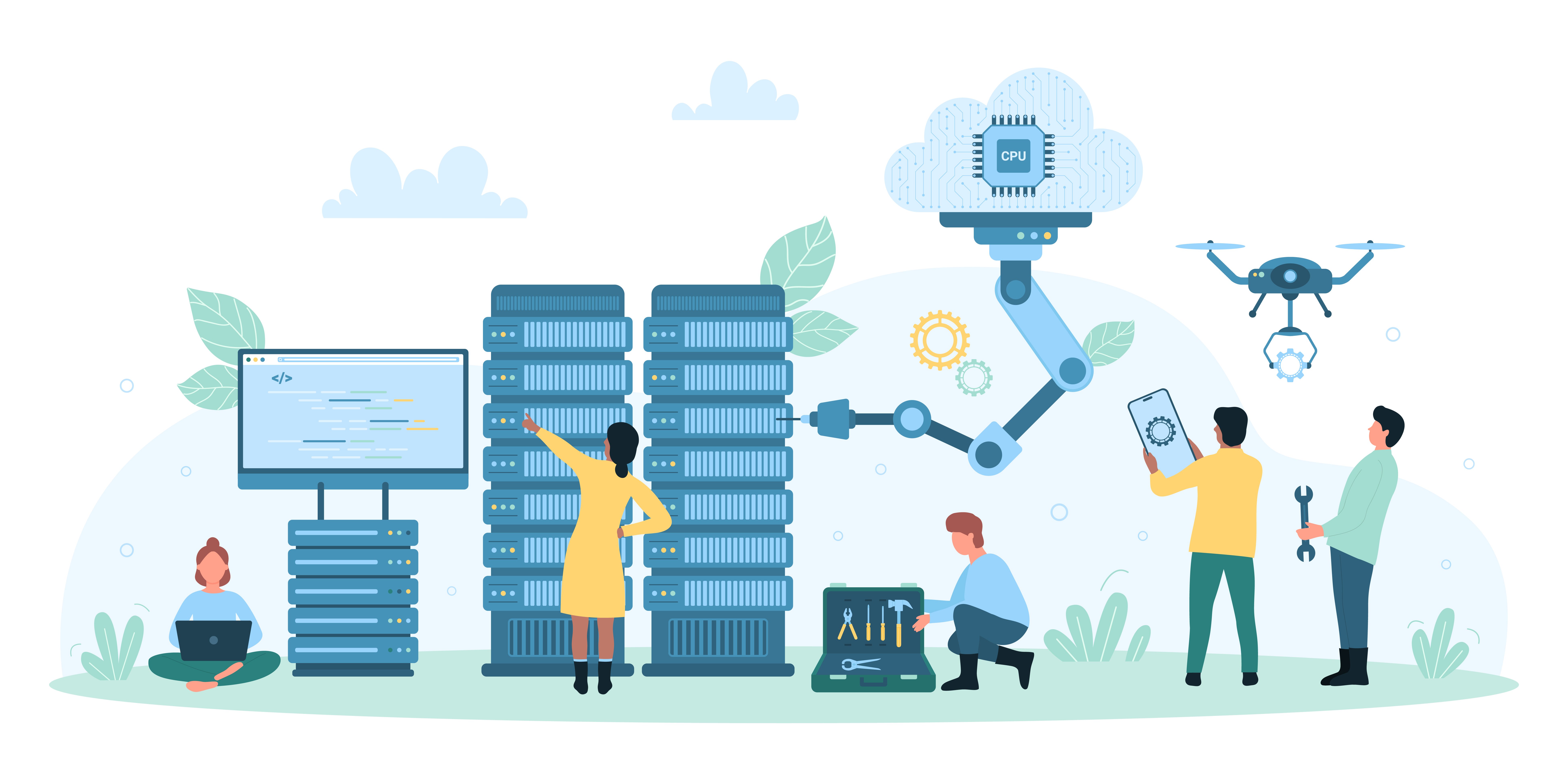In a previous post, we looked at the definition of data economy and the technology elements of ecosystems.
The two pillars driving the data economy are data and interconnections, and we have confirmed that this flow was possible because of the increased performance and efficiency of computing resources. In this post, we will learn about the computing resources that enable the ecosystem technology elements of the digital economy. In addition, in this posting, we refer to computing resources as more familiar IT infrastructure and explore the role of IT infrastructure for a strong combination of business and IT infrastructure in the era of data economy.

What is IT Infrastructure?
IT infrastructure refers to computing (memory and processors that process operations), storage (data storage), and network (data communication).
An ecosystem of IoT, 5G networks, cloud computing, big data, artificial intelligence, and blockchain interact to create a data economy. The behavior and interaction of technology elements is possible to the extent that the performance and efficiency of the IT infrastructure (computing resources) supports. As IT infrastructure becomes one of the key factors influencing the development of the digital economy, it is changing with the company's business strategy.
What is a workload and why is it important?
Workload is the language used to refer to the size and capacity of your IT infrastructure.
This is how business and IT infrastructure collaborated in the past. When a new service or product is launched, the IT infrastructure for business applications uses a fixed amount of physical resources and adds physical resources if needed.
While there is no problem with mid- to large-scale units of business expansion, if you take a ramp-up approach, the way you scale your IT infrastructure should also support it. IT infrastructure also needs ramp-up scalability, and predicting and monitoring scale and capacity has become important. This is because workload volatility is directly related to cost.
AWS refers to workloads as a collection of resources and code that creates business value1. The Cambridge Dictionary defines it as Workload 2 completed by a person or machine in a specific period of time. I asked ChatGPT and they told me like this. 'Workload is the amount of processing, storage, and network resources required for an application or collection of applications to operate.' 3
Workload is the amount of capacity in the IT infrastructure that an application uses.
Change in workload
As the data economy progresses, traditional business applications such as front-end and supply chain management (SCM) such as websites and mobile apps have built-in big data and machine learning, and video conferencing, video lectures, 3D simulation and modeling are spreading across the industry.
IT Infrastructure Changes and Challenges
In the digital economy, processor (CPU) consuming artificial intelligence and 3D graphic rendering combine with existing or new applications. Graphics Processing Units (GPU), a specialized processor for this task, have an annual growth rate of 33.3%4 between 2022 and 2023, and demand for high-performance computing (HPC) consisting of GPUs, storage, and networks is also increasing. Demand for a high-performance data center infrastructure that can accommodate power-intensive GPUs and HPCs is also rising.
Multiple IT infrastructure options to help ensure business flexibility and scalability.
Increasingly, companies are entering the market quickly with minimal functionality and taking ramp-up expansion to determine when and how large the expansion will be based on market responses. As traditional approaches to predicting and purchasing workloads based on similar and previous cases make it difficult to provide flexibility and scalability to the business, more and more companies are taking the strategy of purchasing IT infrastructure in cloud computing. Cloud computing can be less expensive to start with, but can pay unexpectedly high monthly fees if it is not managed closely by an internal professional organization because of the dynamic, automatic allocation and release of IT infrastructure capacity depending on workload. IT infrastructure must identify the advantages and disadvantages of cloud computing and prepare a variety of purchase options for each type of IT infrastructure, including these.
Availability of IT infrastructure to ensure business reliability.
IBM studies show that sudden service failures can cost companies 53 percent less revenue, 47 percent less productivity, and 41 percent less brand trust.5. Because the data economy is built on data and interconnectivity, IT infrastructure failures can also damage their reliability. That's why availability of your IT infrastructure is becoming more important.
The Role of IT Infrastructure in the Digital Economy.
The IT infrastructure of the digital economy needs to shift to supporting business-level scaling. At the same time, a high level of availability is required. When your IT infrastructure has performance, scalability, and availability, businesses in the digital economy era can remain competitive with flexibility, timeliness, and reliability. In the next post, we will learn about the data center that enables IT infrastructure to gain performance, scalability, and availability.
Content is protected by copyright law and is owned by Daou Technology Inc.
It is prohibited to modify or commercially use this content without prior consent.
Featured images via gettyimages.
References
1. Workloads, AWS Documentation, 2023
2. Workload, Cambridge Dictionary, 2023
3. What is workload?, ChatGPT, 2023
4. Graphic Processing Unit (GPU) Market Size and Forecast, Verified Market Research, 2022
5. A commissioned study conducted by Forrester Consulting on behalf of IBM, August 2019



